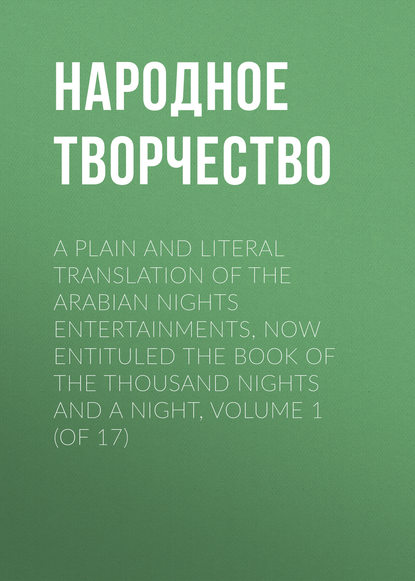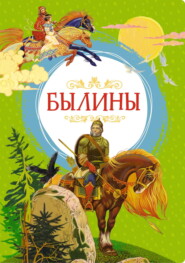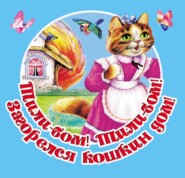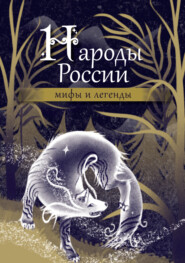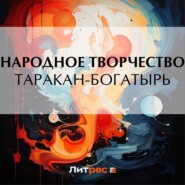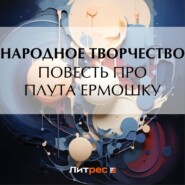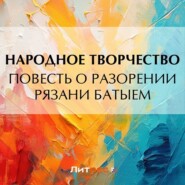По всем вопросам обращайтесь на: info@litportal.ru
(©) 2003-2024.
✖
A plain and literal translation of the Arabian nights entertainments, now entituled The Book of the Thousand Nights and a Night, Volume 1 (of 17)
Настройки чтения
Размер шрифта
Высота строк
Поля
i. e. Axe and sandals.
215
Lit. "Strike his neck."
216
A phrase which will frequently recur; meaning the situation suggested such words as these.
217
The smiter with the evil eye is called "A'in" and the person smitten "Ma'ín" or "Ma'ún."
218
Arab. "Sákiyah," the well-known Persian wheel with pots and buckets attached to the tire. It is of many kinds, the boxed, etc., etc.; and it is possibly alluded to in the "pitcher broken at the fountain" (Ecclesiastes xii. 6) an accident often occurring to the modern "Noria." Travellers mostly abuse its "dismal creaking" and "mournful monotony": I have defended the music of the water-wheel in Pilgrimage ii. 198.
219
Arab. "Zikr" lit. remembering, mentioning (i. e. the names of Allah), here refers to the meetings of religious for devotional exercises; the "Zikkírs," as they are called, mostly standing or sitting in a circle while they ejaculate the Holy Name. These "rogations" are much affected by Darwayshes, or begging friars, whom Europe politely divides into "dancing" and "howling"; and, on one occasion, greatly to the scandal of certain Engländerinns to whom I was showing the Ezbekiyah I joined the ring of "howlers." Lane (Mod. Egypt, see index) is profuse upon the subject of "Zikrs" and Zikkírs. It must not be supposed that they are uneducated men: the better class, however, prefers more privacy.
220
As they thought he had been there for prayer or penance.
221
Arab. "Ziyárat," a visit to a pious person or place.
222
This is a paternal salute in the East where they are particular about the part kissed. A witty and not unusually gross Persian book, called the "Al-Námah" because all questions begin with "Al" (the Arab article) contains one "Al-Wajib al-busídan?" (what best deserves bussing?) and the answer is "Kus-i-nau-pashm," (a bobadilla with a young bush).
223
A weight of 71-72 English grains in gold; here equivalent to the dinar.
224
Compare the tale of The Three Crows in Gammer Grethel, Evening ix.
225
The comparison is peculiarly apposite; the earth seen from above appears hollow with a raised rim.
226
A hundred years old.
227
"Bahr" in Arab. means sea, river, piece of water; hence the adjective is needed.
228
The Captain or Master of the ship (not the owner). In Al Yaman the word also means a "barber," in virtue of the root, Raas, a head.
229
The text has "in the character Ruká'í," or Riká'í, the correspondence-hand.
230
A curved character supposed to be like the basil-leaf (rayhán). Richardson calls it "Rohani."
231
I need hardly say that Easterns use a reed, a Calamus (Kalam applied only to the cut reed) for our quills and steel pens.
232
Famous for being inscribed on the Kiswah (cover) of Mohammed's tomb; a large and more formal hand still used for engrossing and for mural inscriptions. Only seventy-two varieties of it are known (Pilgrimage, ii., 82).
233
The copying and transcribing hand which is either Arabi or Ajami. A great discovery has lately been made which upsets all our old ideas of Cufic, etc. Mr. Löytved of Bayrut has found, amongst the Hauranic inscriptions, one in pure Naskhi, dating A.D. 568, or fifty years before the Hijrah; and it is accepted as authentic by my learned friend M. Ch. Clermont-Ganneau (p. 193, Pal. Explor. Fund; July 1884). In D'Herbelot and Sale's day the Koran was supposed to have been written in rude characters, like those subsequently called "Cufic," invented shortly before Mohammed's birth by Murámir ibn Murrah of Anbar in Irák, introduced into Meccah by Bashar the Kindian, and perfected by Ibn Muklah (Al-Wazir, ob. A.H. 328=940). We must now change all that. See Catalogue of Oriental Caligraphs, etc., by G. P. Badger, London, Whiteley, 1885.
234
Capital and uncial letters; the hand in which the Ka'abah veil is inscribed (Pilgrimage iii. 299, 300).
235
A "Court hand" says Mr. Payne (i. 112): I know nothing of it. Other hands are: the Ta'alík; hanging or oblique, used for finer MSS. and having, according to Richardson, "the same analogy to the Naskhi as our Italic has to the Roman." The Nasta' lík (not Naskh-Ta'alík) much used in India, is, as the name suggests, a mixture of the Naskhi (writing of transactions) and the Ta'alík. The Shikastah (broken hand) everywhere represents our running hand and becomes a hard task to the reader. The Kirmá is another cursive character, mostly confined to the receipts and disbursements of the Turkish treasury. The Diváni, or Court (of Justice) is the official hand, bold and round, a business character, the lines often rising with a sweep or curve towards the (left) end. The Jáli or polished has a variety, the Jali-Ta'alik: the Sulsi (known in many books) is adopted for titles of volumes, royal edicts, diplomas and so forth; "answering much the same purpose as capitals with us, or the flourished letters in illuminated manuscripts" (Richardson). The Tughrái is that of the Tughrá, the Prince's cypher or flourishing signature in ceremonial writings, and containing some such sentence as: Let this be executed. There are others e. g. Yákuti and Sirenkil known only by name. Finally the Maghribi (Moorish) hand differs in form and diacritical points from the characters used further east almost as much as German running hand does from English. It is curious that Richardson omits the Jali (intricate and convoluted) and the divisions of the Sulusí, Sulsi or Sulus (Thuluth) character, the Sulus al-Khafíf, etc.
236
Arab. "Baghlah"; the male (Baghl) is used only for loads. This is everywhere the rule: nothing is more unmanageable than a restive "Macho"; and he knows that he can always get you off his back when so minded. From "Baghlah" is derived the name of the native craft Anglo-Indicè a "Buggalow."
237
In Heb. "Ben-Adam" is any man opp. to "Beni ish" (Psalm iv. 3)=filii viri, not homines.
238
This posture is terribly trying to European legs; and few white men (unless brought up to it) can squat for any time on their heels. The "tailor-fashion," with crossed legs, is held to be free and easy.
239
215
Lit. "Strike his neck."
216
A phrase which will frequently recur; meaning the situation suggested such words as these.
217
The smiter with the evil eye is called "A'in" and the person smitten "Ma'ín" or "Ma'ún."
218
Arab. "Sákiyah," the well-known Persian wheel with pots and buckets attached to the tire. It is of many kinds, the boxed, etc., etc.; and it is possibly alluded to in the "pitcher broken at the fountain" (Ecclesiastes xii. 6) an accident often occurring to the modern "Noria." Travellers mostly abuse its "dismal creaking" and "mournful monotony": I have defended the music of the water-wheel in Pilgrimage ii. 198.
219
Arab. "Zikr" lit. remembering, mentioning (i. e. the names of Allah), here refers to the meetings of religious for devotional exercises; the "Zikkírs," as they are called, mostly standing or sitting in a circle while they ejaculate the Holy Name. These "rogations" are much affected by Darwayshes, or begging friars, whom Europe politely divides into "dancing" and "howling"; and, on one occasion, greatly to the scandal of certain Engländerinns to whom I was showing the Ezbekiyah I joined the ring of "howlers." Lane (Mod. Egypt, see index) is profuse upon the subject of "Zikrs" and Zikkírs. It must not be supposed that they are uneducated men: the better class, however, prefers more privacy.
220
As they thought he had been there for prayer or penance.
221
Arab. "Ziyárat," a visit to a pious person or place.
222
This is a paternal salute in the East where they are particular about the part kissed. A witty and not unusually gross Persian book, called the "Al-Námah" because all questions begin with "Al" (the Arab article) contains one "Al-Wajib al-busídan?" (what best deserves bussing?) and the answer is "Kus-i-nau-pashm," (a bobadilla with a young bush).
223
A weight of 71-72 English grains in gold; here equivalent to the dinar.
224
Compare the tale of The Three Crows in Gammer Grethel, Evening ix.
225
The comparison is peculiarly apposite; the earth seen from above appears hollow with a raised rim.
226
A hundred years old.
227
"Bahr" in Arab. means sea, river, piece of water; hence the adjective is needed.
228
The Captain or Master of the ship (not the owner). In Al Yaman the word also means a "barber," in virtue of the root, Raas, a head.
229
The text has "in the character Ruká'í," or Riká'í, the correspondence-hand.
230
A curved character supposed to be like the basil-leaf (rayhán). Richardson calls it "Rohani."
231
I need hardly say that Easterns use a reed, a Calamus (Kalam applied only to the cut reed) for our quills and steel pens.
232
Famous for being inscribed on the Kiswah (cover) of Mohammed's tomb; a large and more formal hand still used for engrossing and for mural inscriptions. Only seventy-two varieties of it are known (Pilgrimage, ii., 82).
233
The copying and transcribing hand which is either Arabi or Ajami. A great discovery has lately been made which upsets all our old ideas of Cufic, etc. Mr. Löytved of Bayrut has found, amongst the Hauranic inscriptions, one in pure Naskhi, dating A.D. 568, or fifty years before the Hijrah; and it is accepted as authentic by my learned friend M. Ch. Clermont-Ganneau (p. 193, Pal. Explor. Fund; July 1884). In D'Herbelot and Sale's day the Koran was supposed to have been written in rude characters, like those subsequently called "Cufic," invented shortly before Mohammed's birth by Murámir ibn Murrah of Anbar in Irák, introduced into Meccah by Bashar the Kindian, and perfected by Ibn Muklah (Al-Wazir, ob. A.H. 328=940). We must now change all that. See Catalogue of Oriental Caligraphs, etc., by G. P. Badger, London, Whiteley, 1885.
234
Capital and uncial letters; the hand in which the Ka'abah veil is inscribed (Pilgrimage iii. 299, 300).
235
A "Court hand" says Mr. Payne (i. 112): I know nothing of it. Other hands are: the Ta'alík; hanging or oblique, used for finer MSS. and having, according to Richardson, "the same analogy to the Naskhi as our Italic has to the Roman." The Nasta' lík (not Naskh-Ta'alík) much used in India, is, as the name suggests, a mixture of the Naskhi (writing of transactions) and the Ta'alík. The Shikastah (broken hand) everywhere represents our running hand and becomes a hard task to the reader. The Kirmá is another cursive character, mostly confined to the receipts and disbursements of the Turkish treasury. The Diváni, or Court (of Justice) is the official hand, bold and round, a business character, the lines often rising with a sweep or curve towards the (left) end. The Jáli or polished has a variety, the Jali-Ta'alik: the Sulsi (known in many books) is adopted for titles of volumes, royal edicts, diplomas and so forth; "answering much the same purpose as capitals with us, or the flourished letters in illuminated manuscripts" (Richardson). The Tughrái is that of the Tughrá, the Prince's cypher or flourishing signature in ceremonial writings, and containing some such sentence as: Let this be executed. There are others e. g. Yákuti and Sirenkil known only by name. Finally the Maghribi (Moorish) hand differs in form and diacritical points from the characters used further east almost as much as German running hand does from English. It is curious that Richardson omits the Jali (intricate and convoluted) and the divisions of the Sulusí, Sulsi or Sulus (Thuluth) character, the Sulus al-Khafíf, etc.
236
Arab. "Baghlah"; the male (Baghl) is used only for loads. This is everywhere the rule: nothing is more unmanageable than a restive "Macho"; and he knows that he can always get you off his back when so minded. From "Baghlah" is derived the name of the native craft Anglo-Indicè a "Buggalow."
237
In Heb. "Ben-Adam" is any man opp. to "Beni ish" (Psalm iv. 3)=filii viri, not homines.
238
This posture is terribly trying to European legs; and few white men (unless brought up to it) can squat for any time on their heels. The "tailor-fashion," with crossed legs, is held to be free and easy.
239





